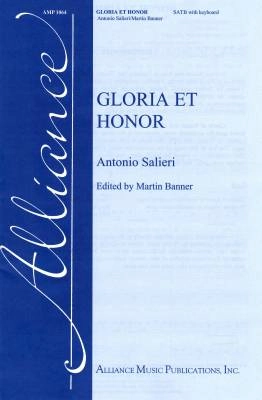Opens in a new window
Alliance Music Pub Gloria et Honor - Salieri/Banner - SATB
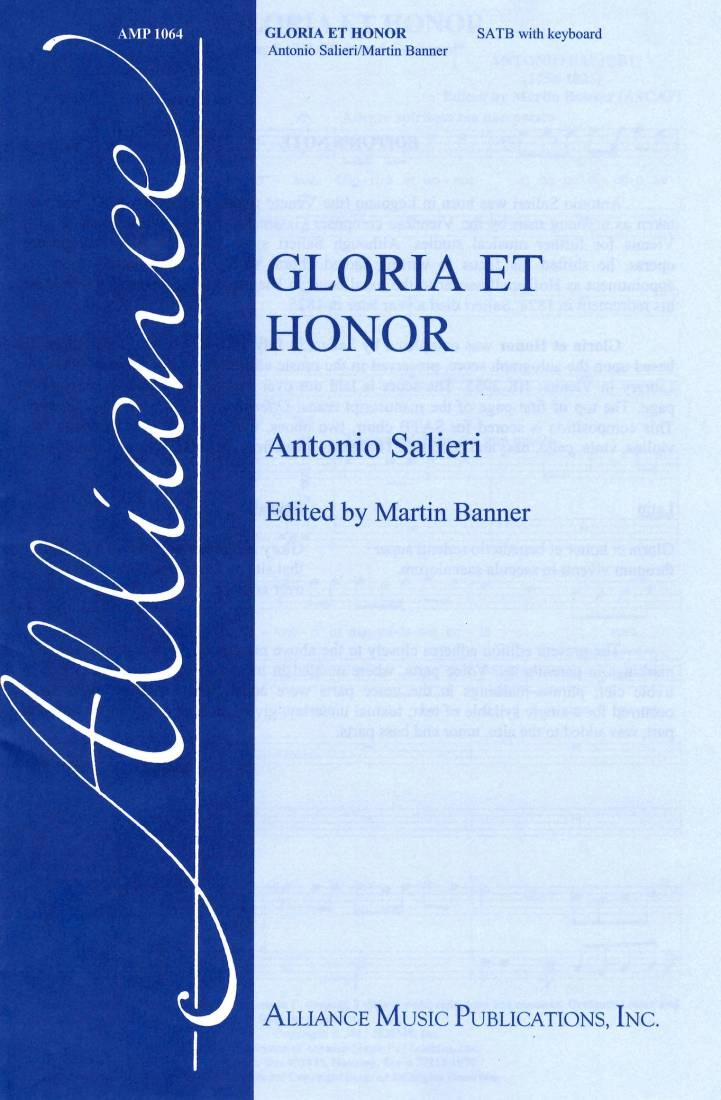
Additional Photos:
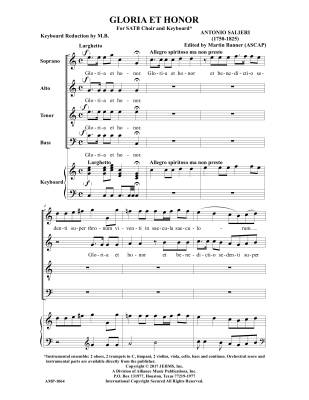
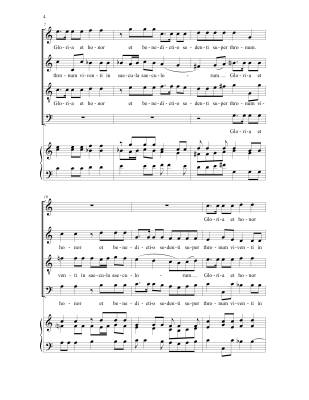
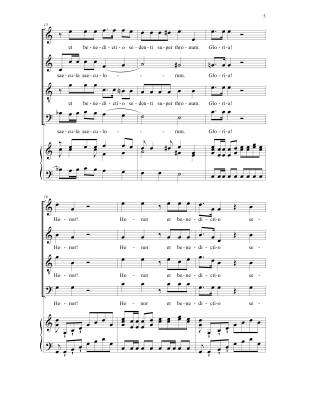
- Author/Composer:
- SALIERI, ANTONIO
- Instrumentation:
- SATB ACCOMP
- Model #:
- AMP1064
Editor: Martin Banner
Format: Choral Octavo
Voicing: SATB with piano accompaniment (optional Orchestral Accompaniment available separately)
EDITOR'S NOTE
Antonio Salieri was born in Legnano (the Veneto region of Italy) in 1750, and was taken as a young man by the Viennese composer Gassmann, first to Venice, and then to Vienna for further musical studies. Although Salieri spent his early years composing operas, he shifted his focus to writing sacred choral works for the church upon his appointment as Hofkapellmeister to the royal court in Vienna in 1788, a post he held until his retirement in 1824. Salieri died a year later in 1825.
Gloria et Honor was completed by Salieri in July 1809 in Vienna. This edition is based upon the autograph score, preserved in the music collection of the Austrian National Library in Vienna: HK.2955. The score is laid out over eleven pages, eleven staves per page. The top of first page of the manuscript reads: Offertor. Nro 2 Luglio 1809. Salieri. This composition is scored for SATB choir, two oboes, two trumpets in C, timpani, two violins, viola, cello, bass and continuo. The text is taken from the Apocalypse of Saint John.
Latin
Gloria et honor et benedictio sedenti super thronum viventi in saecula saeculorum
English
Glory and honor and blessing to him that sits on the throne, who lives for ever and ever.
The present edition adheres closely to the above mentioned source, noting editorial markings in parentheses. Voice parts, where notated in moveable clefs, were rewritten in treble clef; phrase markings in the voice parts were added where two or more notes occurred for a single syllable of text; textual underlay, given generally only in the soprano part, was added to the alto, tenor and bass parts.
- Martin Banner
Media
Sound Sample
Press play to listen
Q & A
There are currently no questions for this product.
Reviews
There are currently no reviews for this product. Be the first to write one!


